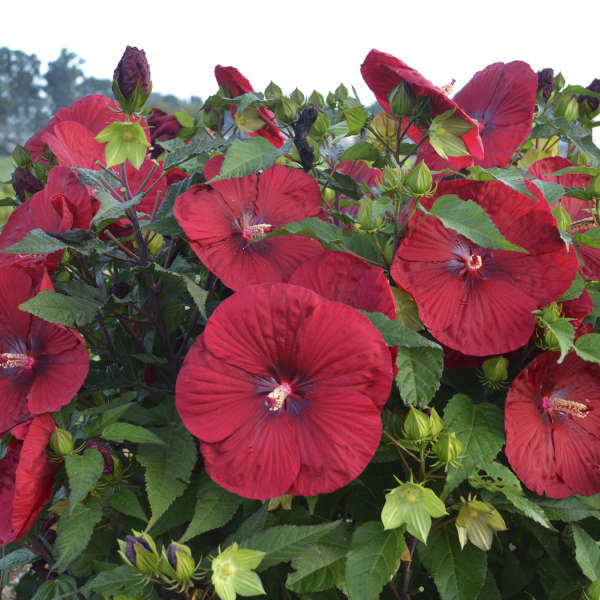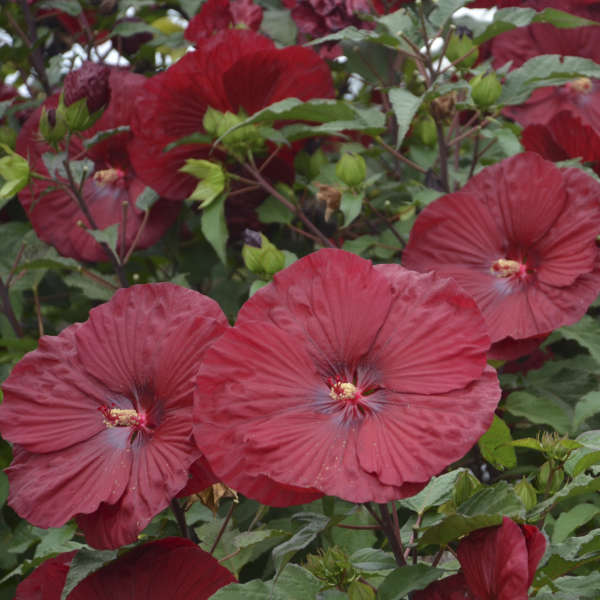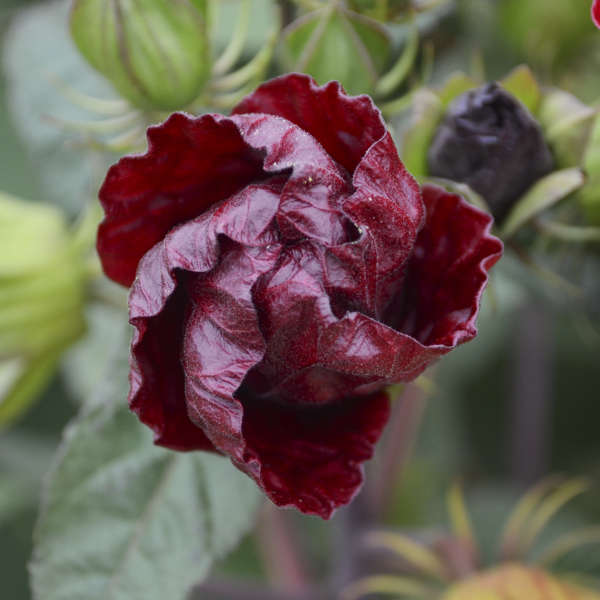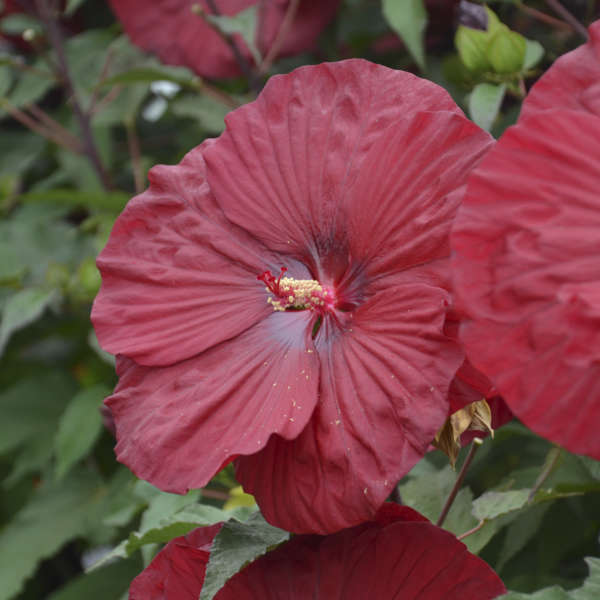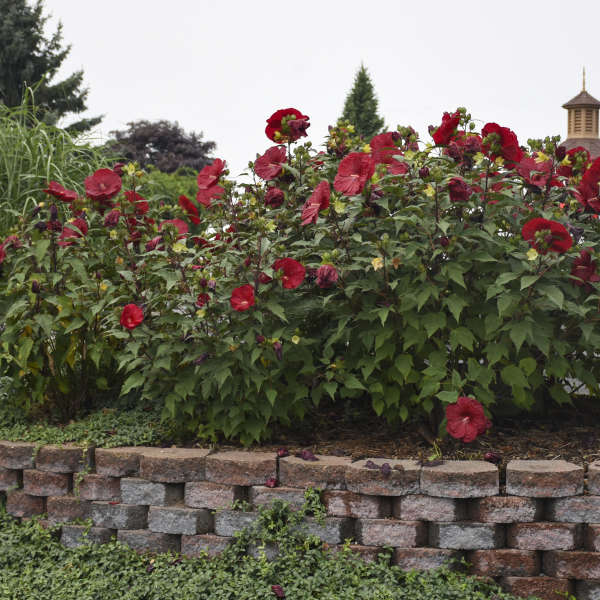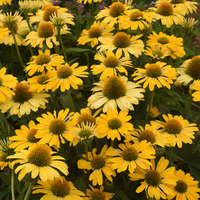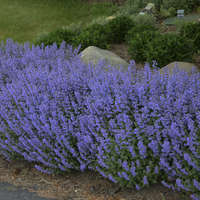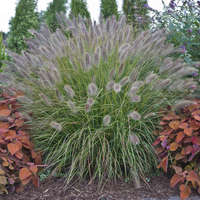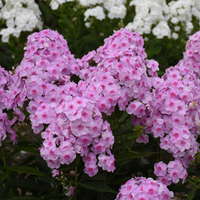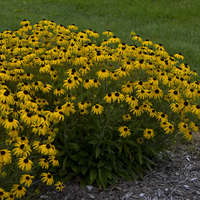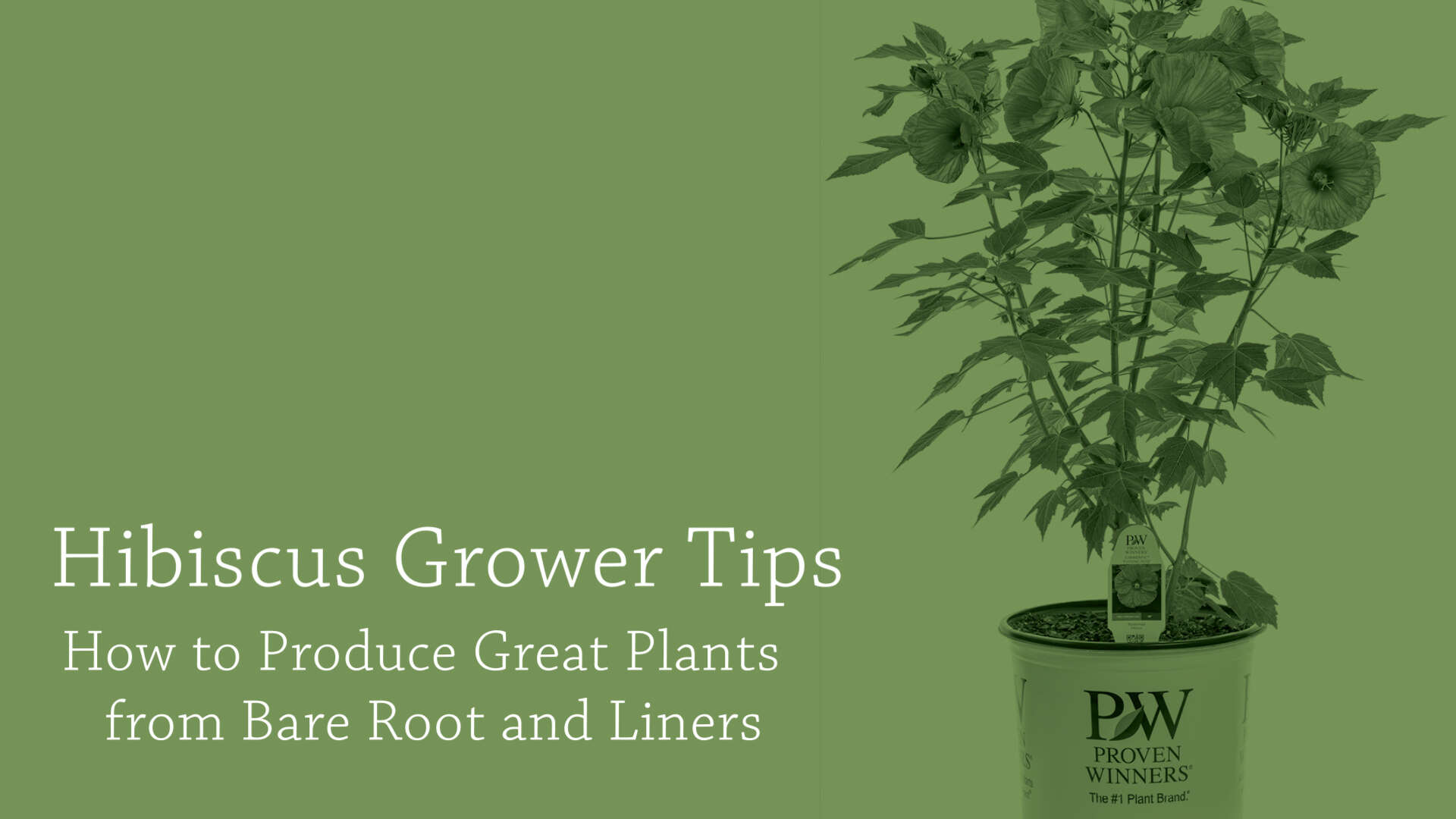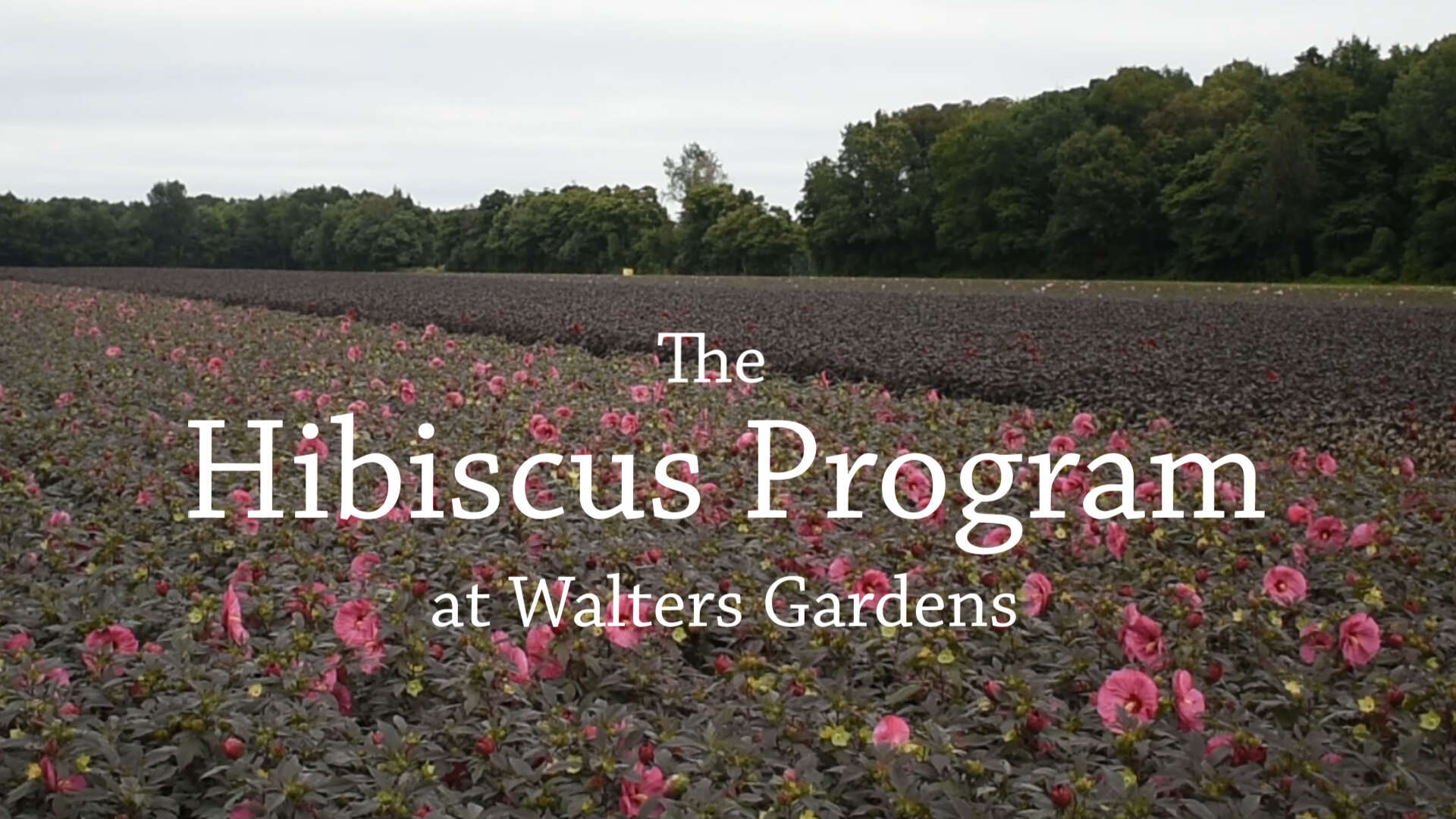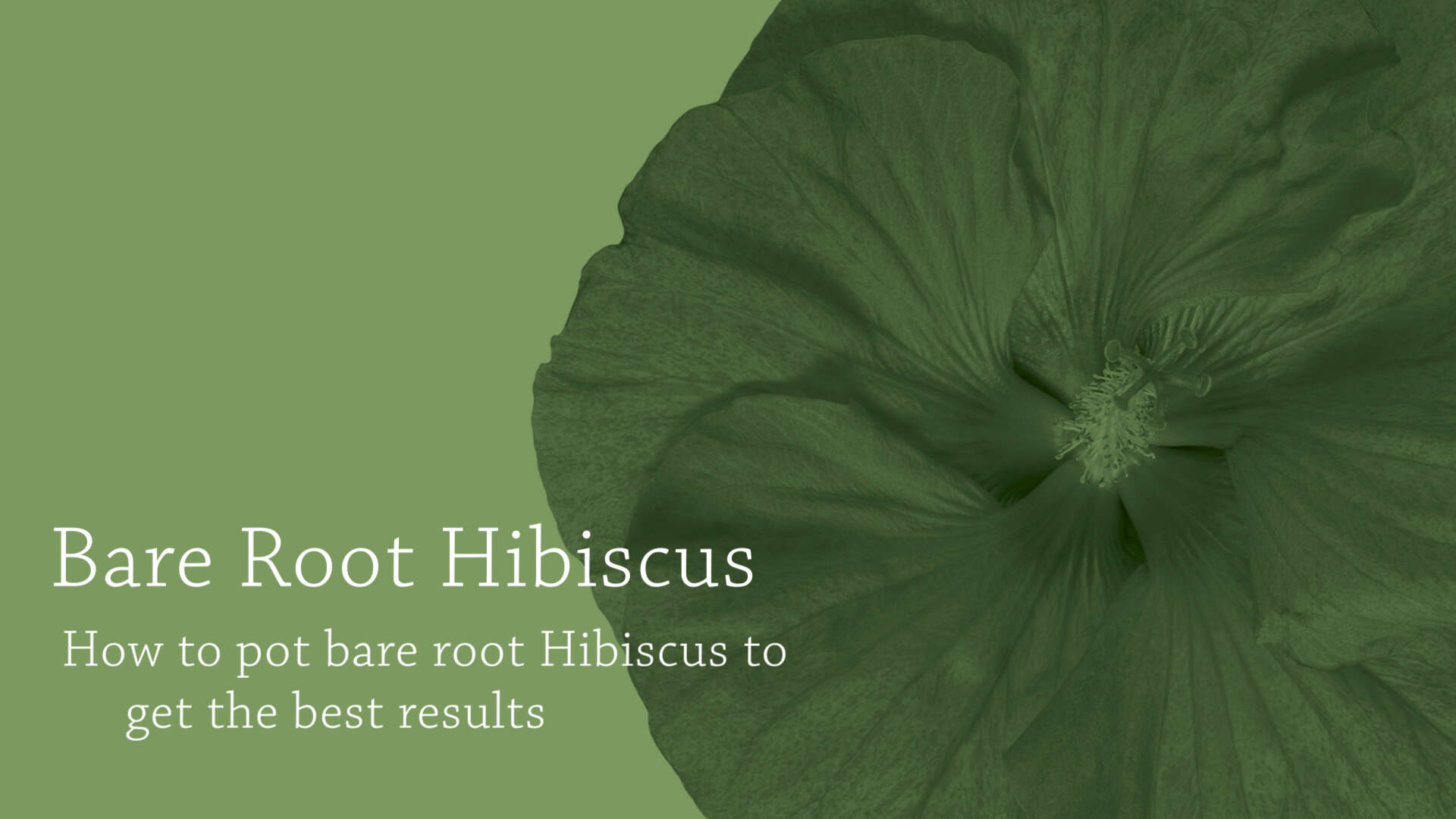Hibiscus 'Vintage Wine' PP27839

Common Name: Rose Mallow
We’ve come a long way from the tall, open habits of Hibiscus such as ‘Lord Baltimore’. From the Walters Gardens Hibiscus hybridizing program is this red-flowering variety. Near-black buds open to huge 7”, scarlet red flowers that shimmer in the sun with a darker red eye. The overlapping petals of ‘Vintage Wine’ have a crinkled texture and open completely with minimal cupping. Flowers are produced from the top to the bottom of the plant, rather than only at the top like some older cultivars.
Dark green, heart-shaped leaves form a densely upright, columnar clump. Use this incredibly dense variety as a focal point in your sun garden.
‘Vintage Wine’ differs from ‘Cranberry Crush’ with the shape of its leaves, the tone of flower color (a warmer red), and the density of its plant habit. Walters Gardens is committed to the best genetics, so we have discontinued ‘Fireball’ and ‘Lord Baltimore’ in favor of this improved variety.
These North American native plants bring massive, tropical-looking flowers all the way to zone 4. Although later to emerge than most perennials in spring, these are fast growing plants capable of adding an inch of new growth a day. Excellent at brightening up end of season gardens.
